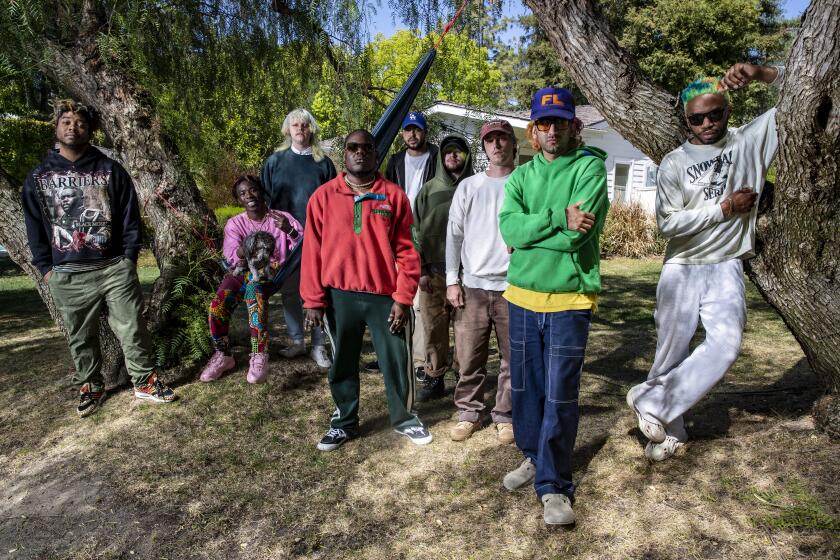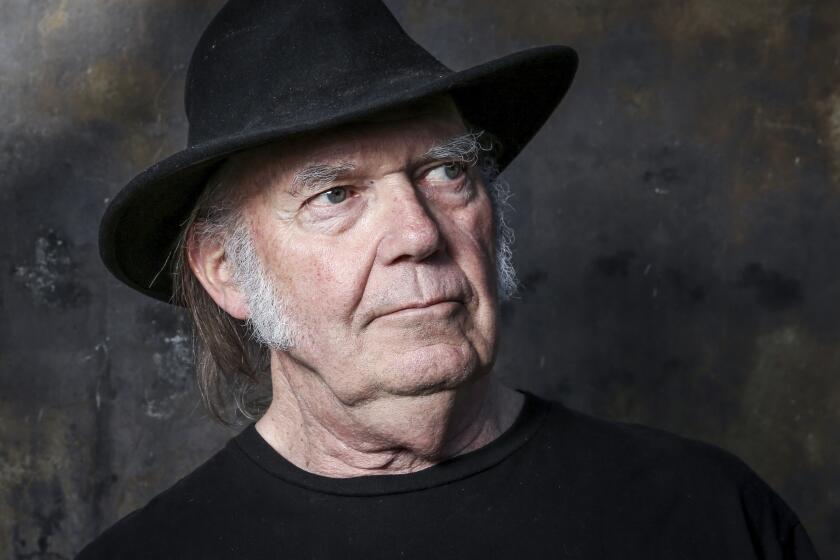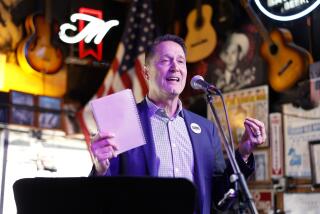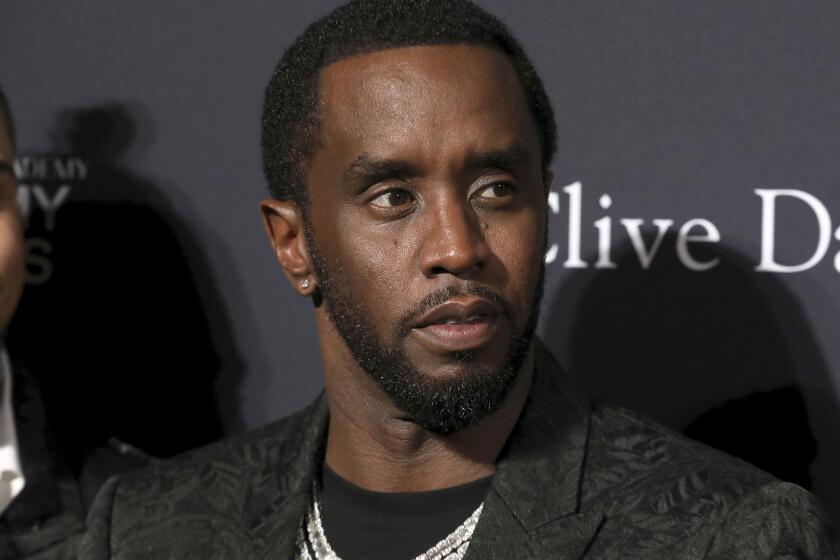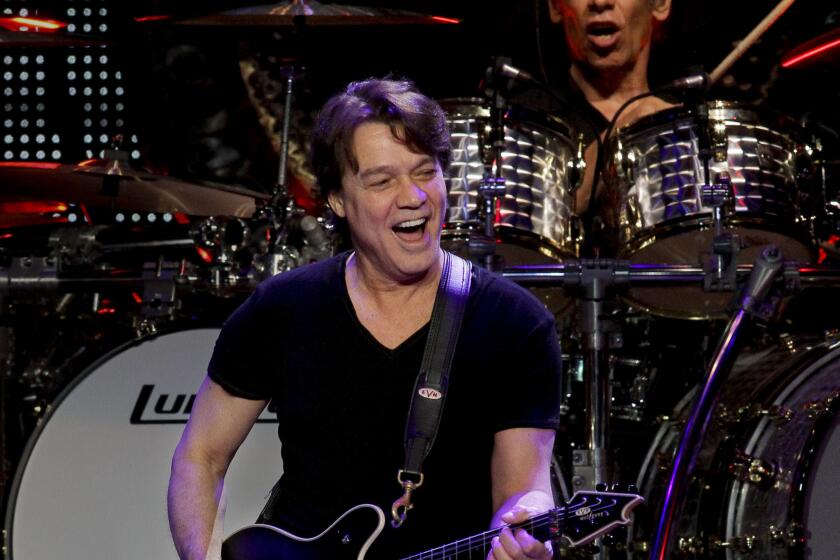Does Spotify pay artists a fair rate? Here’s what musicians, managers and Apple Music have to say
- Share via
Frustrated by what they consider an inequity, last month a group of independent musicians who’d endured a year without live-performance income commenced a series of protests called “Justice at Spotify” at the music streaming platform’s offices around the world.
Armed with signs, noisemakers and a set of demands, in Los Angeles a few dozen supporters of the newly formed Union of Musicians and Allied Workers converged on Spotify’s offices in the downtown Arts District.
Julia Holter, a singer, songwriter and film composer, helped lead the local protest. “This affects everybody, and that’s something a lot of musicians don’t know because they’re not paying attention to Spotify,” she said.
Behind the meme: How “Ladies and gentlemen ...the Weeknd” became “Ladies and gentlemen ... the weekend.”
After gathering near the entrance, Holter started reading their demands — among them, increasing payments to rights holders to a penny per stream, from the current average of between a third and a half a penny, and providing more transparency for musicians. As she did so, a police officer interrupted to tell the group members that they needed to step away from the Spotify entrance.
“It’s accessible, but it’s private property,” Holter explained — a description that might also be applied to the platform itself.
The musicians’ protest followed Spotify founder and CEO Daniel Ek’s much-discussed 2020 comment that “some artists that used to do well in the past may not do well in this future landscape, where you can’t record music once every three to four years and think that’s going to be enough.”
Needless to say, a vocal number of independent artists didn’t appreciate career advice from an executive who accrued his nearly $5 billion in wealth by monetizing their art.
Spotify is owned, in part, by Universal Music Group, Sony Music Entertainment and Warner Music, whose continued growth is tied to the success of the streaming giant. In 2020, overall music revenue increased 9.2% over 2019 to $12.2 billion and streaming accounted for 83% of U.S. recorded music income, according to the Recording Industry Association of America’s year-end report. In February, Spotify stock hit an all-time high when it reached $387 per share, which valued the company at more than $72 billion. As Billboard noted, that valuation is about twice that of Spotify’s largest supplier, Universal Music. Spotify’s stock price is up more than 150% over the last year.
Damon Krukowski, a writer, artist advocate and former drummer for Galaxie 500, said during a recent Zoom video call with Holter that the Union of Musicians and Allied Workers was born of necessity. For some, the communal video get-togethers offered a chance for commiseration or support. For others, it was a way to channel restless energy or educate themselves on the business. “We were just talking about what to do,” Krukowski says. “At that point, everybody’s being thrown out of work, essentially, and it didn’t look like we would be included in any of the government relief plans.”
As the talk continued, an issue they could all relate to came up: what they considered paltry royalty checks received from Spotify, and the way in which the platform’s algorithmic recommendation system seemed rigged against them and in favor of major-label affiliated artists.
On a broader scale, the union aims “to tackle the inequality of corporate power in the streaming environment and seek to build solidarity with other workers engaged in this struggle.”
At least one billionaire singer and songwriter seems to agree with their mission. “I think it’s harder for artists now, unfortunately. It’s such a small percentage,” Paul McCartney said during a recent episode of the BBC Radio 4 program “The Price of Song.”
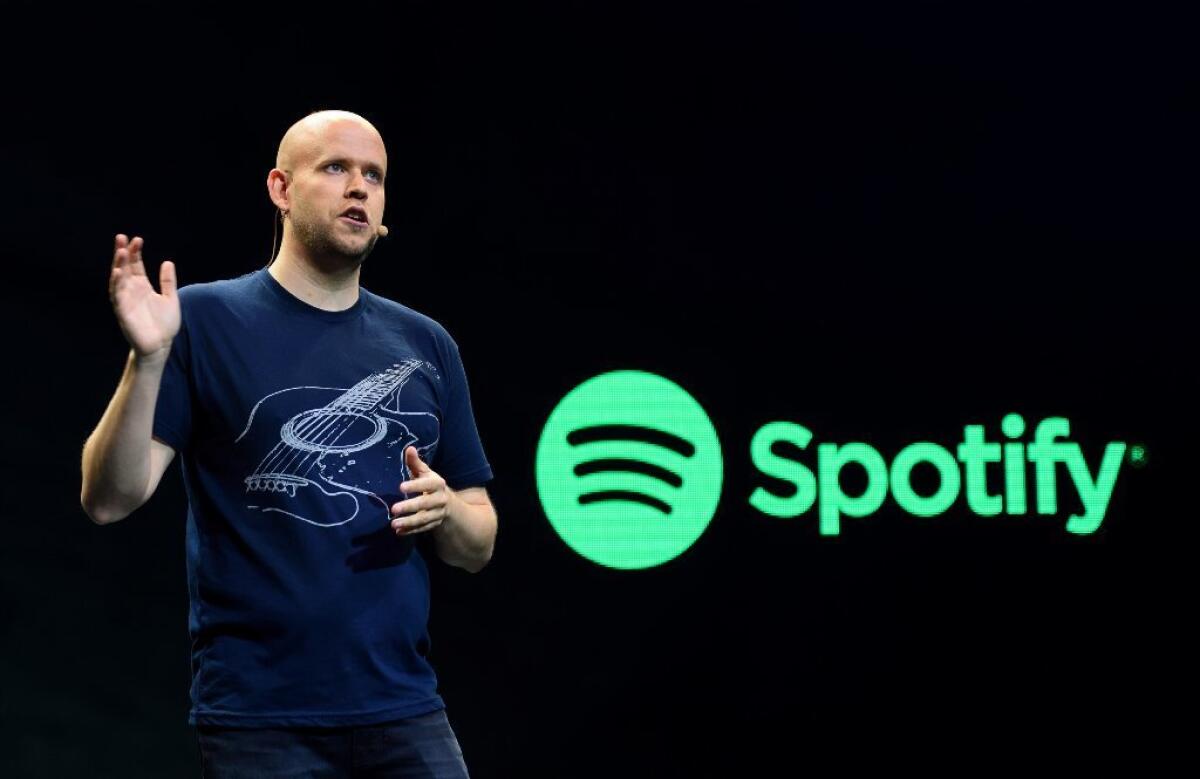
On Friday, Apple Music, the world’s second-largest streaming service, wrote in a letter obtained by the Wall Street Journal that it had increased its royalty payout to an average of a penny per stream. The announcement, coupled with the artists’ protests, puts further pressure on Spotify to follow suit.
Holter said that Spotify increasing royalties to a penny per stream would send a clear, graspable message to its subscribers that it values the artists who serve as the foundation of the company. It would also bring Spotify in line with competitors Apple, Amazon Music and Tidal.
The company issued a statement not long after the protest touting its record payouts. “Spotify generates more money for rights holders than any other streaming service: As of 2020, Spotify has paid over $23 billion in royalties to rights holders — including over $5 billion in 2020 alone, up from $3.3 billion in 2017.” The statistic was included in an initiative called “Loud & Clear,” which is aimed at rebutting some of those claims and offering further transparency for artists.
What would “Justice at Spotify” look like? And more important, say defenders of Spotify’s model, where exactly is the injustice?
“When you look at the big picture of the music industry over the last 10 or 15 years, Spotify saved the music business,” says Bill Werde, director of the Bandier Program in Recording and Entertainment Industries at Syracuse University and former editorial director of Billboard. “Before there was streaming, the business had lost revenue for 15 straight years. Once streaming took hold, those losses flattened out. Now, over the last four or so years we’ve seen growth.”
Moreover, notes Werde, within the pie chart detailing the total revenue that Spotify generates through music streaming, “roughly 70% of it is going to rights holders,” he says. The actual recording artists? “They’re keeping anywhere between 5% and a quarter.”
Hip-hop boy band-slash-collective Brockhampton has just released its best album to date. Could it also be its last?
As of the first quarter of 2020, about 400 million people worldwide subscribed to one or more music streaming services. With an estimated 32% share of the market, Spotify is the dominant service; its closest competitor, Apple Music, has an 18% share, as tallied by media tracking firm Midia Research.
Mark Mulligan, managing director and streaming analyst at Midia, has followed the Justice at Spotify protests and Ek’s response to them, and he’s got bad news for the Union of Musicians and Allied Workers. “There is nothing you can do about streaming royalty payments that will make it look like record sales again.
“Streaming works for record labels,” says Mulligan. “It works for publishers. It works if you’ve got thousands or millions of songs — it all adds up,” Mulligan says. “But if you’ve only got 20 or 30 or 100 songs then it doesn’t. You need scale of catalog to benefit.”
Artist manager Jonathan Daniel, a 40-year veteran of the industry whose company Crush Music represents artists including Sia, Courtney Love and Green Day, says that many fans don’t understand the streaming equation, and that a seemingly impressive number such as 1 million plays on Spotify can be confusing. “People see a million streams on Spotify and they think that’s a lot. It’s nothing,” he says. Look at it this way, he suggests. “A million seconds equals 11 days. A billion seconds equals 31 ½ years.” On Spotify, he says, a million streams might earn a few thousand dollars, whereas a billion streams likely means “$20 million split between the label, the publisher and the artist.
“The ones who have really mastered the streaming world make a lot of money,” says Daniel.
Even if Spotify were to double its royalty payouts, that increase still wouldn’t make much of a difference to your average artist or band with a few albums in their discography, says Midia analyst Mulligan, who uses as an example an act that gets a million streams on Spotify in a year.
“You could be hoping to earn between $1,500 and $2,000 from a million streams. Now say there are four of you and Spotify doubles its royalties. Great — now it’s $4,000 to share between four people. You can get yourself a new guitar.”
He says that until the pandemic hit, most artists had accepted Spotify and other streaming services’ role in the ecosystem: It was a promotional tool that attracted fans who would then pay for tickets to see them perform.
“What streaming was and will be again, when live gets going, is essentially marketing that the artists get paid for,” he says. “As long as it only has to play that role, then everything’s good.”
From Guns N’ Roses to the Go-Go’s, Julien Baker to Bad Bunny, from dance festivals to metal mosh pits, live music is finally, finally back.
The Union of Musicians and Allied Workers protest came after a late February online Spotify event called Stream On in which executives announced plans to expand its platform into more than 80 new markets, including many of the Caribbean Islands, African countries including Mali, Nigeria and Senegal, and parts of the Middle East, Eastern Europe and Asia. Among the creators who appeared during Stream On were J Balvin, Billie Eilish, Bruce Springsteen and Ava DuVernay.
It also comes amid Spotify’s massive spending spree in podcasting. In the last two years it acquired the production company Gimlet and the Anchor podcast platform, signed production contracts with Prince Harry and wife Meghan, the Duchess of Sussex, and Barack and Michelle Obama and spent a reported $100 million on an exclusive deal with Joe Rogan. Unlike the rights to music, which Spotify doesn’t own, its podcast investments offer a bigger potential return while making the company less reliant on music rights holders.
Spotify has attempted to make it easier for artists to profit from the service, by adding features like a tip jar and the ability to sell tickets and merchandise via the platform. More controversially, in 2020 Spotify launched an initiative it described as a “promotional recording royalty rate” that lessens an artist’s payout per stream in exchange for an algorithm nudge that ensures the track is more likely to be played in the platform’s autoplay and radio formats.
Artist advocate Krukowski describes the offering as a new kind of payola. “They’re saying, ‘Look, we can manipulate the users to boost your plays.’ That’s a confession to the manipulation of consumer behavior through the algorithm — and they’re very conscious of it.”
Spotify isn’t new to controversy. Here’s a rundown of the music streamer’s history of feuds with artists and songwriters over royalties, privacy and more.
Bryan M. Johnson is Spotify’s head of artist and industry partnerships, and he spent the last few months overseeing the Loud & Clear project. He calls the initiative “an opportunity to provide some transparency to the artist about how the streaming economy works.”
Asked about accusations that its “promotional recording royalty rate” amounted to payola — artists sacrifice income in order to get more spins — Johnson says that, on the contrary, the program allows smaller artists without money in the bank to have more say in which songs they want to emphasize at any given time.
“Artists and labels,” Johnson says, “can identify music that’s a priority for them and our system adds a signal to the algorithm that determines personalized listening sessions such as radio and auto-play.” He adds, “What this does is allow our algorithms to account for what’s important to the artist.”
The program is still in its beta stage, he adds, and applies only to its radio and autoplay formats. Playlist placement remains outside the initiative’s purview.
For Holter, all the discussion about fractions of pennies, parity and payola, while crucial, is less a concern than Spotify’s power and potential consequences for musicians. “There’s a devaluing of music,” she says.
“For creative people just starting out, I feel very concerned about everyone having to fit into a Spotify playlist mentality. It creeps me out.”
More to Read
The biggest entertainment stories
Get our big stories about Hollywood, film, television, music, arts, culture and more right in your inbox as soon as they publish.
You may occasionally receive promotional content from the Los Angeles Times.
